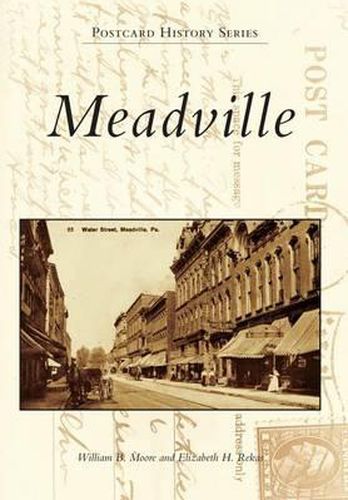Readings Newsletter
Become a Readings Member to make your shopping experience even easier.
Sign in or sign up for free!
You’re not far away from qualifying for FREE standard shipping within Australia
You’ve qualified for FREE standard shipping within Australia
The cart is loading…






In 1788, David Mead and nine companions established the first settlement, Cussewago, on the present site of Meadville. The town grew slowly at first, but business was stimulated by the arrival of the canal and the railroad. The young town did not want for culture as two colleges, a theater, a library, and an art association were established. By 1910, downtown business buildings crowded out residential holdouts, streets were paved and lighted by electricity, and streetcars brought people to work from the tree-lined boulevards blocks away. Within the next decade, larger industries arrived, blunting the effects of the Great Depression. After World War II, residents moved farther into the suburbs and the city center went through urban renewal, but vestiges of efforts by the early settlers remain visible among today’s newer landmarks.
$9.00 standard shipping within Australia
FREE standard shipping within Australia for orders over $100.00
Express & International shipping calculated at checkout
In 1788, David Mead and nine companions established the first settlement, Cussewago, on the present site of Meadville. The town grew slowly at first, but business was stimulated by the arrival of the canal and the railroad. The young town did not want for culture as two colleges, a theater, a library, and an art association were established. By 1910, downtown business buildings crowded out residential holdouts, streets were paved and lighted by electricity, and streetcars brought people to work from the tree-lined boulevards blocks away. Within the next decade, larger industries arrived, blunting the effects of the Great Depression. After World War II, residents moved farther into the suburbs and the city center went through urban renewal, but vestiges of efforts by the early settlers remain visible among today’s newer landmarks.